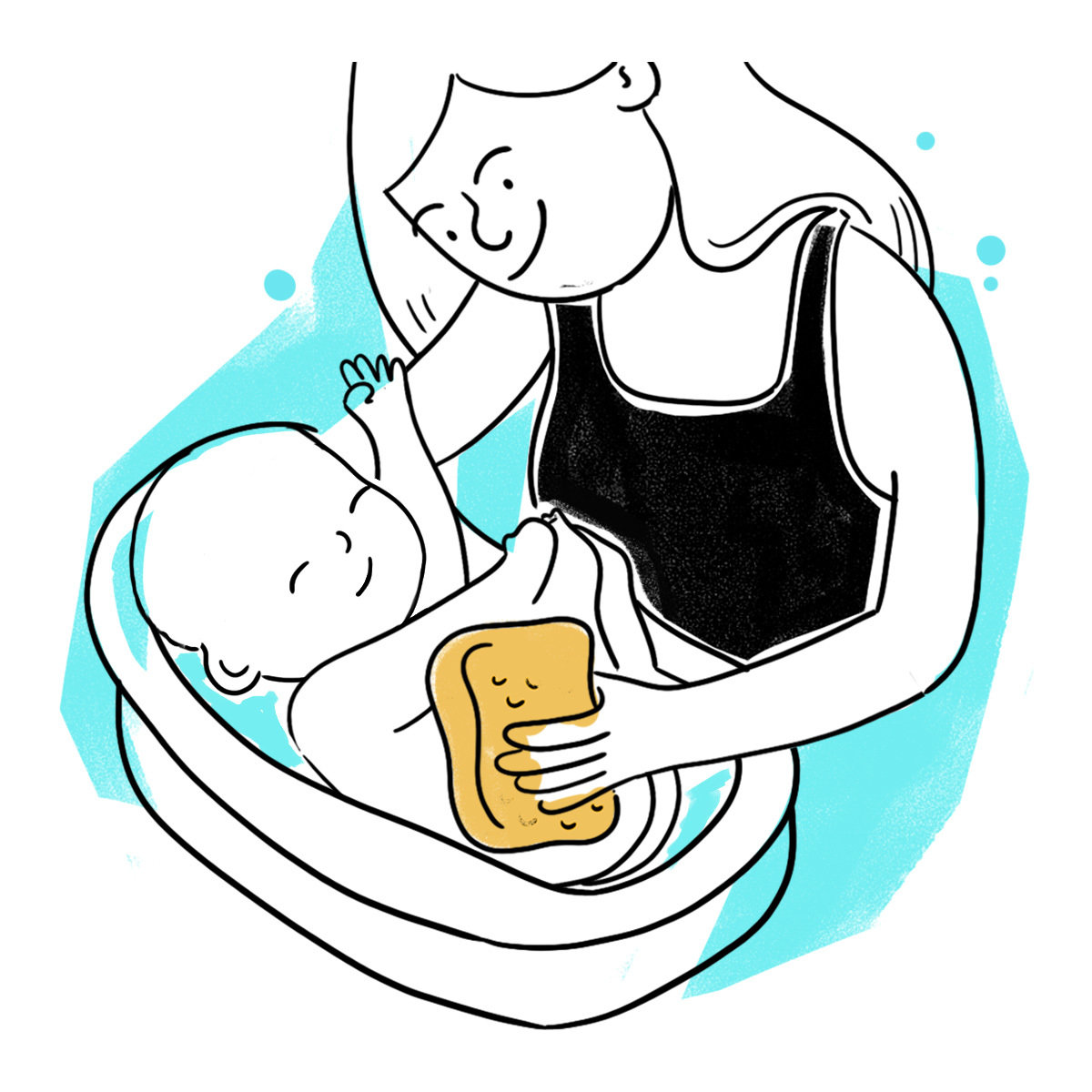
Learn how to care for your newborn, from head to toe.
There are many things new parents have to learn on the fly once a baby is born, but one of the first is what the heck to do with a newborn's umbilical cord stump. Amidst the first diaper changes, learning how to breast or formula feed, and being beyond exhausted, parents are also supposed to know how to take care of what is essentially an open wound right in the middle of their new child's body. It seems overwhelming, but it doesn't have to be. Luckily, caring for a newborn's umbilical cord stump is actually pretty easy.
What is the umbilical cord anyway?

During pregnancy, the umbilical cord is basically a giant vein that supplies vital nutrients and oxygenated blood to a developing baby. But once the baby is born, the cord is no longer necessary. It gets clamped and snipped, leaving a tiny one- to two-inch stump behind that is still attached to the baby. Eventually, this stump dries up and falls off, revealing the baby's adorable belly button. But in the meantime, it's important to take good care of the stump to avoid your newborn developing an infection.
How to Take Care of the Umbilical Cord Stump:
1. Keep it dry.

Years ago, doctors used to recommend cleaning the stump with rubbing alcohol to help it dry out. But now, the Mayo Clinic notes, doctors believe the use of rubbing alcohol may kill good bacteria that helps the stump heal and fall off. Instead, parents should leave the stump completely alone. Do not wash it or treat it with anything, and try to let it get as much air as possible.
2. Keep it uncovered.

The stump doesn't need to be covered with a bandage, unless instructed by a doctor. The Mayo Clinic recommends folding down the top of the baby's diaper to keep the stump dry and exposed to the air.
3. Only give sponge baths.

Submerging the baby's torso in water could get the stump wet and expose it to bacteria. Until the umbilical cord stump dries out, doctors recommend sticking with sponge baths to avoid getting any moisture or soap near the area.
4. Let the stump fall off on its own.

The stump will fall off when it's ready to, so resist the urge to pick or pull at it. Even if it's "hanging on by a thread," says the American Pregnancy Association, leave it alone until it falls off by itself.
When and How Will the Stump Fall Off?

The umbilical stump usually falls off within one to two weeks of a baby being born. It comes off just like a scab, with no pain. The Mayo Clinic notes that like with a scab, there may be a small amount of blood visible when the stump falls off, but there shouldn't be active bleeding or excess fluid present.
When to Worry

The main thing to worry about with the umbilical cord stump is infection. Contact your pediatrician if you notice:
— heavy bleeding
— oozing pus
— red or swollen skin at the base of the stump
— foul smelling discharge coming from the stump
— a pink, moist bump at the site
— the area is causing your baby discomfort
— the umbilical stump hasn't fallen off after three weeks




